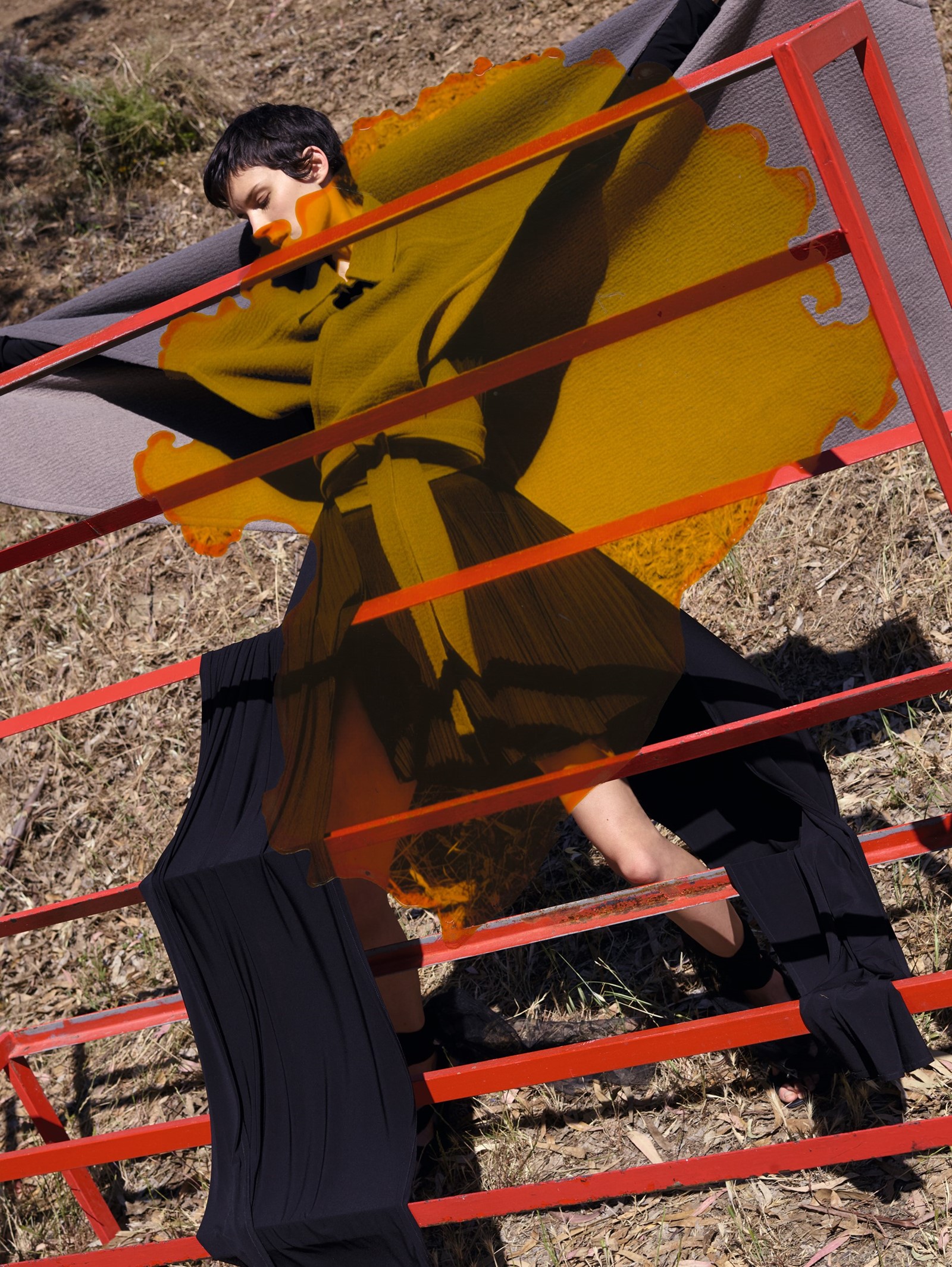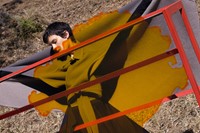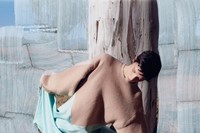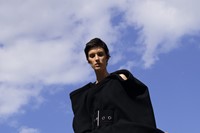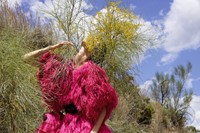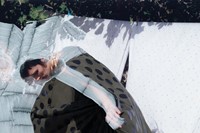Jonathan Anderson is quite possibly the most prolific designer of our proudly prolific times. The 35-year-old Northern Irishman has carved not just one but two distinct identities for himself in the industry landscape. At his own label, he is renowned as an experimenter and innovator, pushing envelopes and transgressing boundaries in ever-intriguing ways. His work at the Spanish leather-goods house Loewe on the other hand, where Anderson has been creative director since September 2013, upholds the values of craft, tradition and technique. There, the designer invents a future while simultaneously demonstrating his inestimable skill as a master fashion curator. His catalogue of references is second to none.
Despite that disparity, there is a crystal clarity that makes it easy to identify Anderson’s vision across both: his oddball, ‘off’ styles, skew-whiff skirts and layered trousers; his strange proportions, abbreviated hemlines, inflated sleeves and elongated cuffs; his predilection for unusual accessories as points of focus and emphasis; the spare aesthetics of his advertising campaigns for Loewe, with their non sequitur contrasts of imagery. Those hark back to a time when print advertising was as, if not more, inspiring than much editorial, and when establishing a mood – an identity – was more important than hawking a bag. Not only the look but the mood of Anderson’s universe is one of the strongest in fashion today – and it is, broadly speaking, ubiquitous. Anderson’s output may be huge but his sphere of influence is even larger.
Neatly enough then, “JW Anderson was trying to look at vastness of space,” Anderson says of his Autumn/Winter 2019 show. “It was based on Zen gardens and the fact that you can only see certain elements at one time.” And, he told Vogue Runway immediately afterwards, he was also thinking about, “the idea of women walking on clouds”. It’s a romantic notion. Hence a mise-en-scène studded with strategically placed rocks, where the hems of models’ long skirts trailed in the plump, snowy-white carpet installed for the occasion at Yeomanry House, the central London space in which it was presented. “Sometimes it can seem as if you’re looking down at the tops of mountains, or the rocks can look like islands on the sea,” the designer continues. “It was this idea that you can reinterpret a space from different viewpoints. I thought there was something about infinity, in terms of spacing and repeated space.” Big ideas are what have come to be expected of this designer, who rarely disappoints.
Loewe, on the other hand and apparently conversely, was “about focus – focusing in on something tiny”. Specifically, it drew on the concept of miniatures. It was held, as Loewe shows have been since Anderson’s debut, at the heritage site of Maison de l’Unesco in Paris, the combined work of three architects – Frenchman Bernard Zehrfuss, Hungarian Marcel Breuer and Italian Pier Luigi Nervi – validated by an international committee of another five globally renowned names. It is international, then, as reflects the nature of contemporary fashion and, of course, this particular brand: shown in Paris, designed by an Irishman and with Spanish heritage. “A collection of oval-shaped portraits is hung upon white walls,” the Loewe show notes read. “Dating from the 16th and 17th centuries and encompassing paintings of English, Flemish, French, Italian and Spanish provenance, these post-Restoration works represent ladies and gentlemen (both famous and forgotten) from Mary Queen of Scots to King Charles I. Musing on analogue forms of communication in the digital present, each painstaking facsimile involves the marriage of form and function at an inherently personal scale.” More dichotomies: macro-scale versus microcosm, a global view alongside an obsession with detail. Anderson’s simultaneous approaches to fashion are inherently paradoxical.
The designer is responsible for designing two main womenswear and two main menswear runway collections for each name. That’s not taking into account the collection he designs for Uniqlo, pre-collections and collection-within-a-collection Paula’s Ibiza, a capsule under the Loewe umbrella, named after the legendary boutique on the Balearic island and its playful spirit, which Anderson remembers with affection. “Paula’s Ibiza came about because of me trying to work out how to be Spanish,” is how he puts it. “In a weird way the only connection I had to Spain was Ibiza. I didn’t go to Madrid or Barcelona. I remember Paula’s Ibiza from when I was a kid and then that brand disappeared. That is Spain for me, and I love the idea of being able to start a brand within a brand like that, of buying the intellectual property and owning it. There’s colour, it’s lightweight – it is incredibly hot in Madrid. If you can’t reflect the country the brand is from, forget being able to sell it to the rest of the world.”
Paula’s Ibiza represents the most straightforward – and, yes, most obviously Spanish – side of his output. Anderson not only shows but also designs Loewe in Paris, operating over four floors of an appropriately grand Left Bank townhouse – Catherine Deneuve occupies the sixth floor, which adds an inherent magic. Anderson says he works from the French capital for practical reasons: it is, quite simply, faster to get there. He takes the Eurostar every Sunday night and returns midweek to the spanking-new JW Anderson headquarters on Parr Street, Hoxton. We are talking on the top floor of that space, against a backdrop of clear blue skies and wall-to-wall windows.
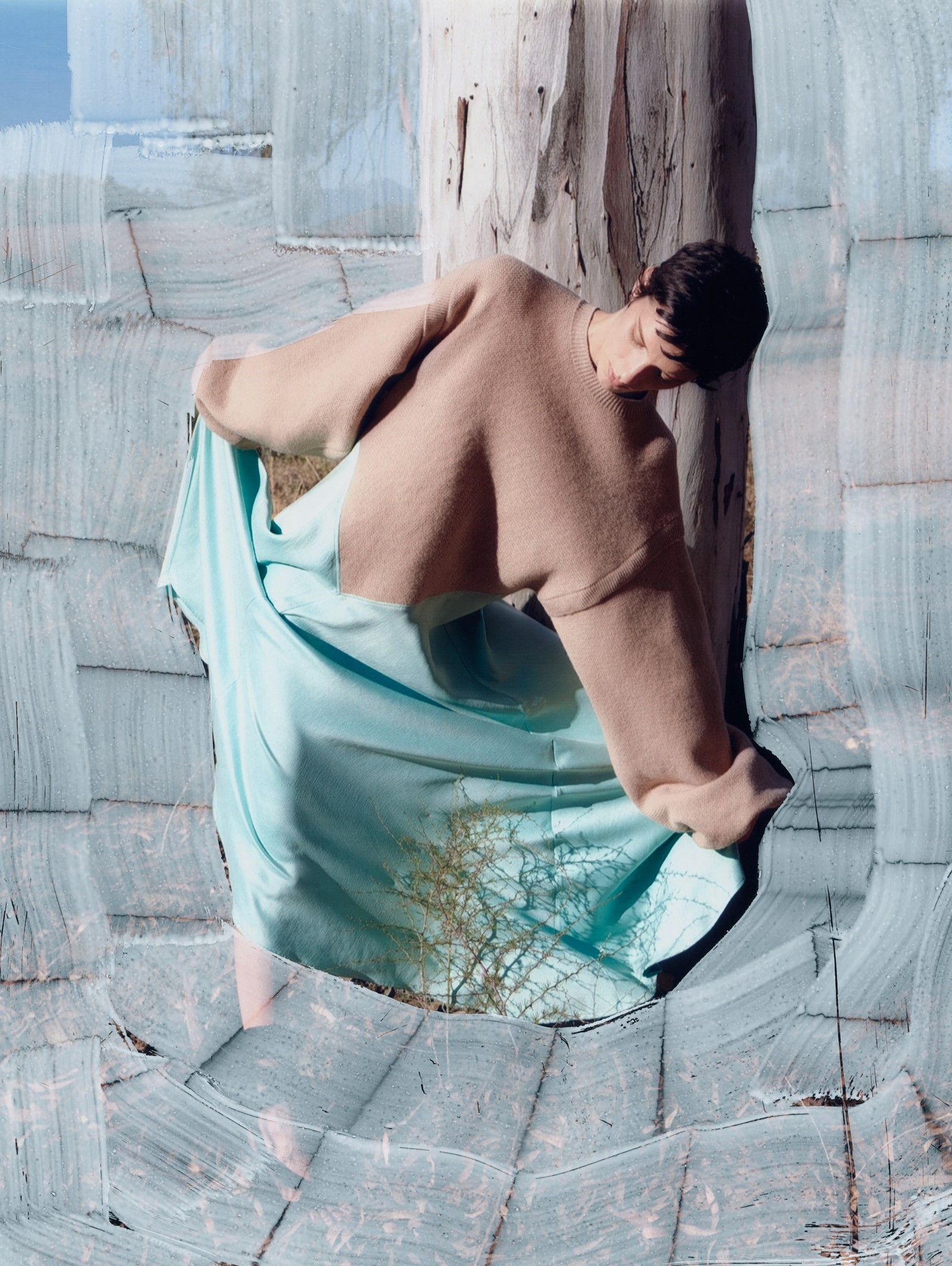
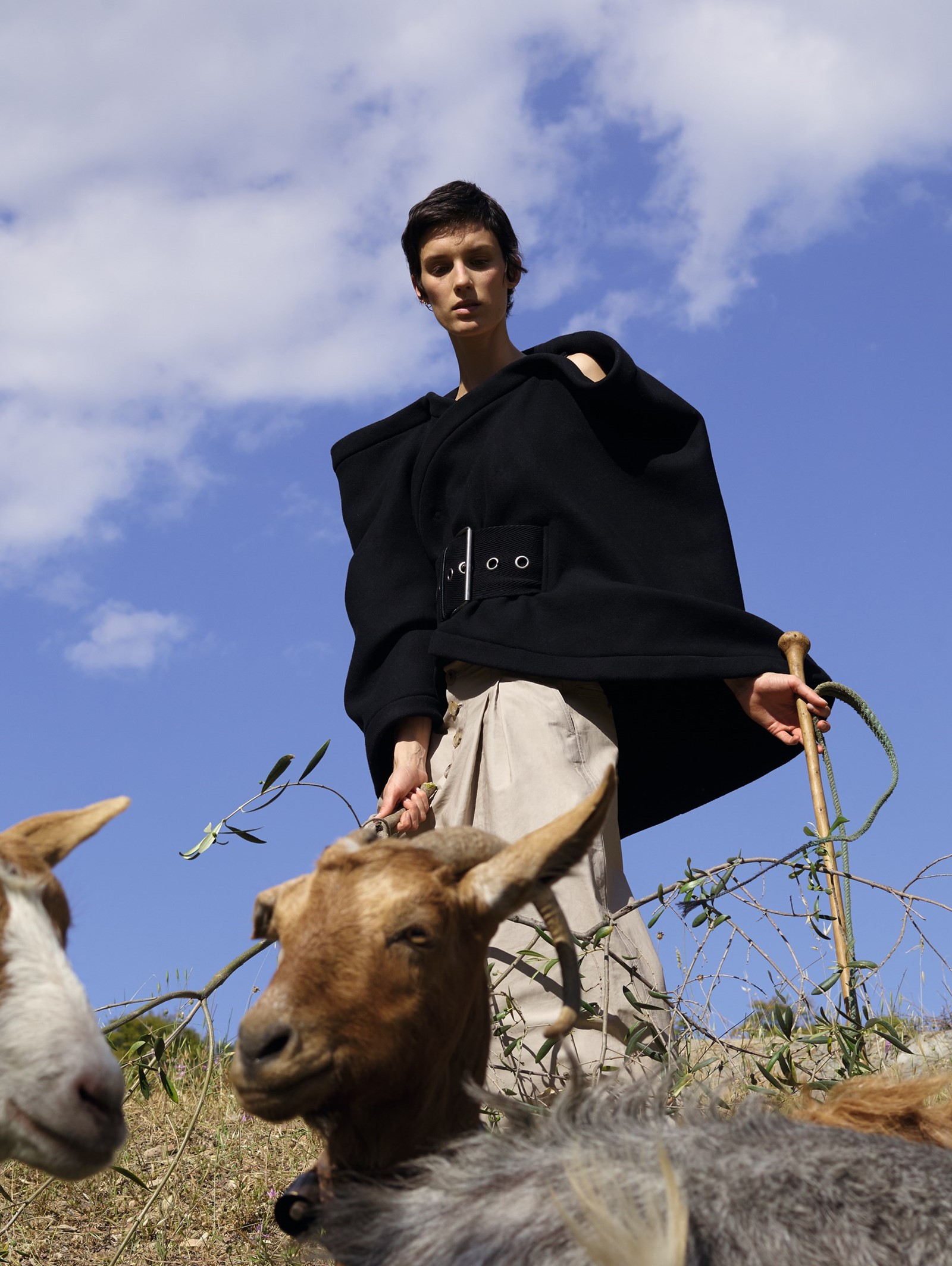
Anderson is blonde and blue-eyed, expressive and vocal, yet only rarely discusses these two brands together. The point of that, presumably, is that each achieves its own goals and receives due attention. They come from the same razor-sharp mind, however, and are, in ways that may be overt or discreet, personal. Anderson has made an exception for our conversation now: the discussion shuttles between them. JW Anderson is 11 this year; the designer is in his seventh year as Loewe’s creative director. That Spanish brand was established in 1846 in Madrid, preceding Louis Vuitton (1854), Moynat (1849) and Goyard (1853); Hermès predates it by just nine years. JW Anderson recently closed its Workshop retail location in Shoreditch, east London, to focus on the brand’s first permanent space opening later this year in the heart of Soho. Loewe has 111 stores worldwide. “One is very old, one is very young. One has a distribution network, one doesn’t,” Anderson says, bluntly, comparing and contrasting. “But at the same time the viewer, the consumer, wants the same level. They are expecting the same outcome.”
It seems almost contrary that the inspiration for this season is directly at odds with the size of the two businesses: Anderson takes pleasure in the wilfully perverse. JW Anderson, after all, is growing but tiny – miniature, in fact – compared with Loewe. The latter is part of the LVMH group, which does not release individual brand revenues but, according to the designer, profits have “let’s just say multiplied” since he took over. He is focused on amplifying the impact of JW Anderson: in 2012, he signed a contract with Topshop, designing collections for the then very successful high-street chain. In 2015 there was the collaboration with Diet Coke. It’s hard to imagine anything much more mainstream than that. In 2016, the label’s menswear collection was live-streamed on the gay social-media dating (read: hook-up) app Grindr, again opening it right up to the world and to a degree of controversy to boot. “It was wild,” Anderson recalls. “At least some people seemed to think I was the Antichrist. I realised it was 100 per cent old-school homophobia. I couldn’t believe that still existed. For me, Grindr is an audience like any other. No one else had done it. Why not?” The designer’s JW Anderson collection for Uniqlo is also wide-reaching. “I do it because I love the brand and I love Mr [Tadashi] Yanai,” Anderson says of that venture. “I think he’s a genius. And I’d rather buy the blue shirt from Uniqlo by JW Anderson than from my own brand. Because there’s less of a connection to it. It’s more like me buying a product as a consumer.”
Loewe, despite its grander scale, is comparatively quiet. It has an elegantly understated foundation that was established in 1988 by Enrique Loewe Lynch, a fourth-generation member of the Loewe family, and is today under the direction of his daughter, Sheila Loewe. The foundation’s mission is “to promote creativity, support educational programmes and safeguard heritage in the fields of poetry, dance, photography, art and craft”.
In 2016, Anderson instigated the annual Loewe Foundation Craft Prize, to be judged by the designer alongside a host of luminaries and aiming to “celebrate excellence, artistic merit and newness in modern craftsmanship”. It has attracted entries from more that 6,000 emergent talents since then. The sense is that this in particular is important to Anderson, who is both a provocateur and a collector of pots – well, ceramics, to be fair – a man who is as likely to play with notions of sex and sexuality as he is to revive the legendary florist Constance Spry: his Spring/Summer 2017 campaign for Loewe, shot by Steven Meisel, was a series of 12 floral still lifes inspired by her work. No clothing involved.
“I’m a realist and I am obsessed by what I do. Ultimately there’s an obsession to be the best. And it just happens to be fashion” – Jonathan Anderson
The evident contradictions, then, are very much part of the man. The gathering of apparently disparate elements – high and low, historical and contemporary, instantly gratifying and slow-burning – to create a cohesive whole is the aim, as, importantly, is the desire to avoid the predictable, to make something new and to encourage people to see things in a different way by so doing.
“I think people had a viewpoint of craft that was not necessarily [representative of] what was happening,” Anderson says, for example. “When you look at Lucie Rie or Hans Coper, they were classified as craft. But Hans Coper is probably as important as Modigliani. His psychotic figures are incredible for their time, for that period. Or look at Grayson Perry. It’s all kind of fallen into more blurred zones, which I think is good and which makes this job more interesting.”
Perhaps with that in mind, and this time with JW Anderson behind it, the designer also instigated the Your Picture/Our Future photography competition last year, with the objective of discovering a hitherto-unknown talent to photograph the label’s advertising campaign. So impressive were the entries – 1,813 in total, from which 50 finalists were selected – that he published the latter in a large-format book.
In this boardroom, and backstage at his fashion shows, Anderson talks at length, in depth and at breakneck speed, ideas spilling from his mind almost faster than he can articulate them. His trajectory is as uncommon as his creative process. He was born Jonathan William Anderson in Magherafelt, Northern Ireland, in 1984. His father – Willie Anderson – is a sporting hero in that country, having headed up the national rugby team in the latter part of the Eighties. He says that his intensely competitive nature and his love of plain speaking – “I think I’m not all that easy to like” – springs from there.
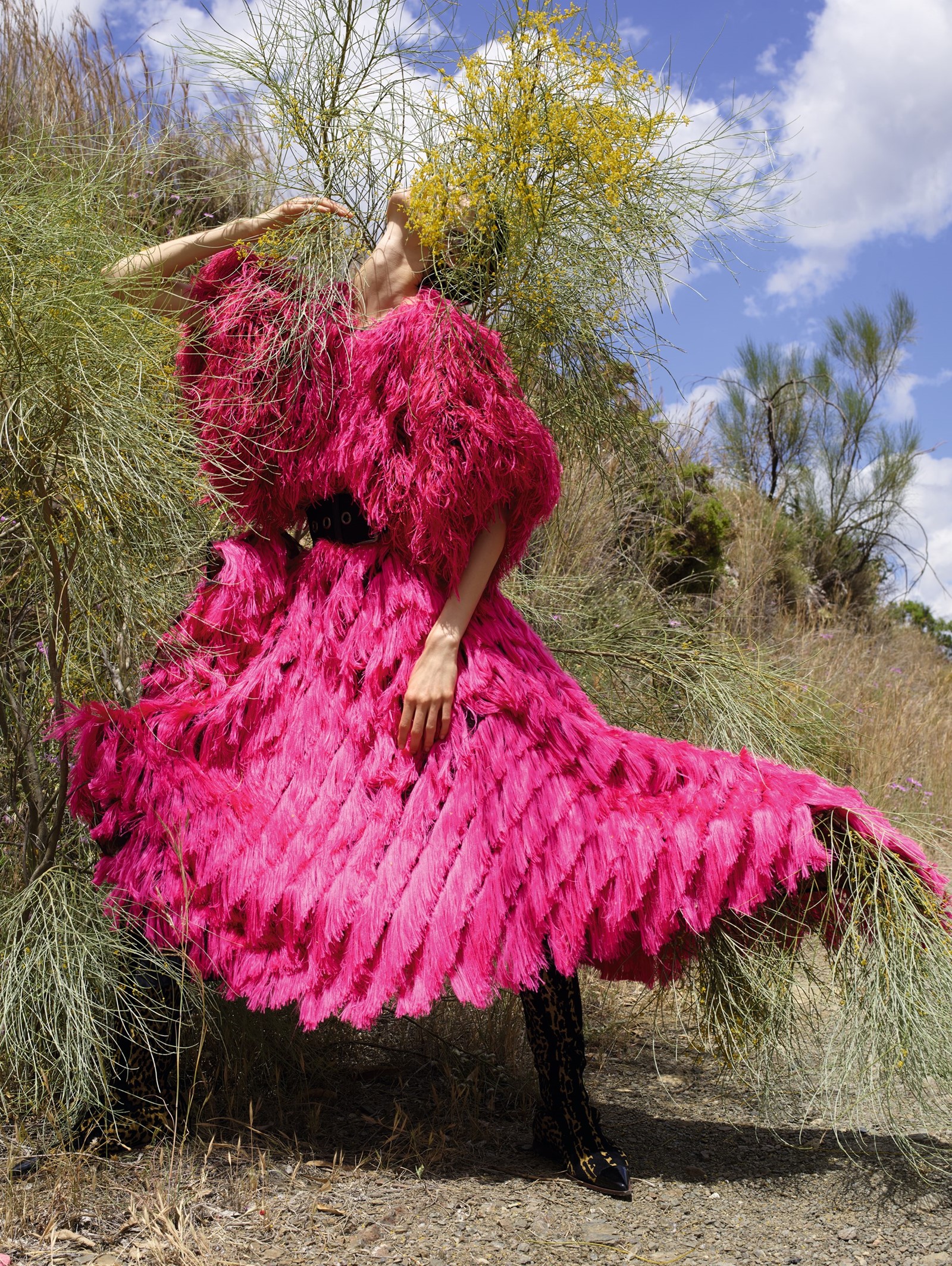
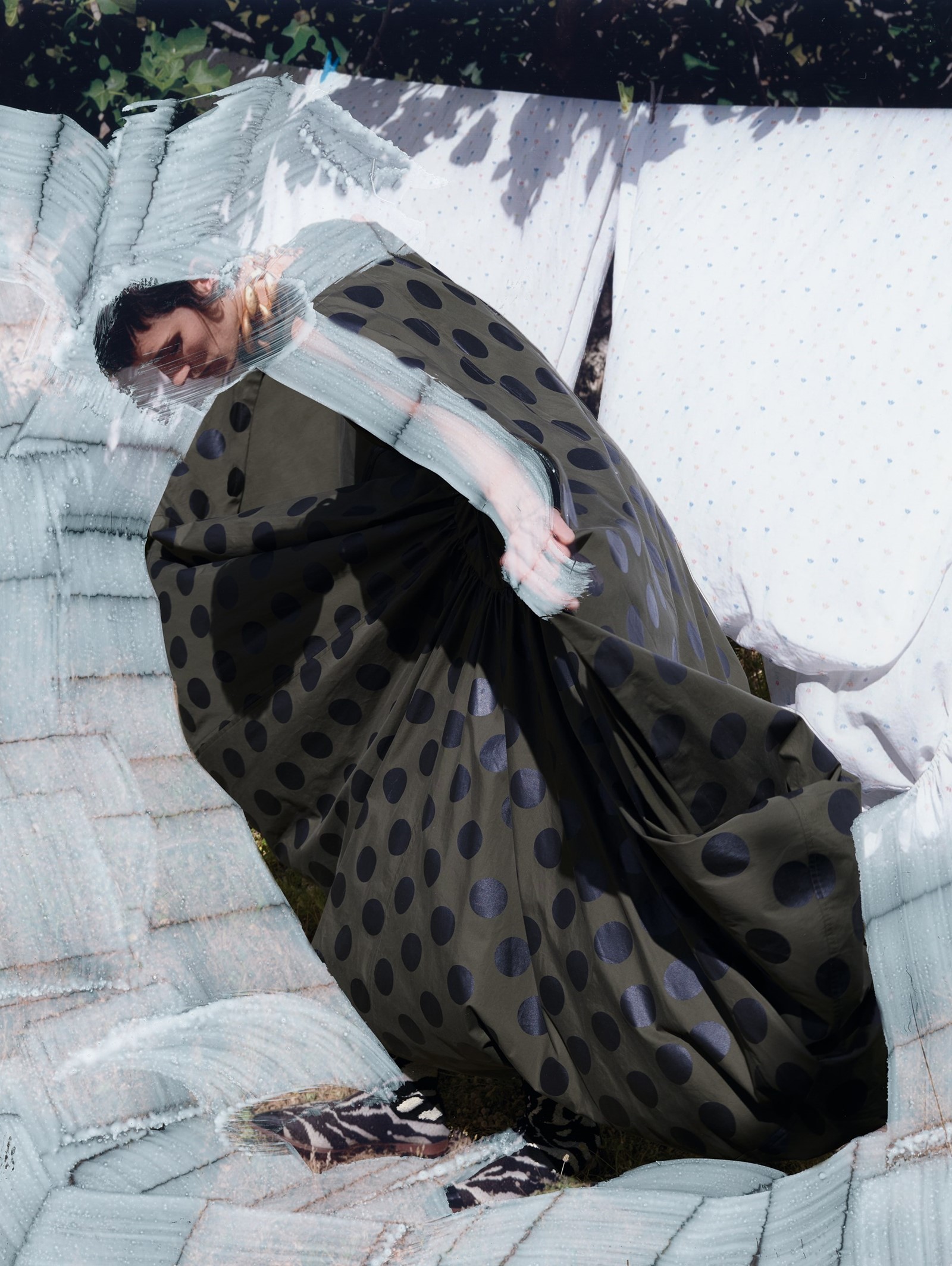
“Of course, my father is incredibly competitive and I think there is something in that,” he says. “But I have taken that something to a different level, because with sport there is a friendliness in the end, whereas in fashion…” On this occasion, unusually, he pauses – for thought and breath. “In fashion, there’s not so much of a friendliness,” he concludes.
“I grew up in Northern Ireland in the Nineties. It was very hostile,” Anderson says. “My father was too outspoken and that got him into trouble. He played for the Irish rugby team and he didn’t believe in a division between Catholics and Protestants. And to have that viewpoint in that period was quite liberal – he was Protestant playing for the national team that was probably seen as more Catholic.”
The designer’s mother, Heather, is an English teacher, more grounded than his father, according to her son. He has one brother, who works for him, and one sister.
“I like to be real,” he says. “I’m a realist and I am obsessed by what I do. Ultimately there’s an obsession to be the best. And it just happens to be fashion. In a weird way I fell into it. It always had to be something creative but whatever it would be I had to play at the top of my game. I wanted to be one of the top ten designers in the world because, otherwise, what’s the point? I just feel like I have an addiction to aesthetics, people creating things together – or to taste level, putting things together that are my vision of what a world should look like.”
It’s unusual for somebody to admit to such drive. He laughs.
“I don’t want to be mediocre. You can make money from mediocrity, of course, but I look at everything – I can see that there are ways to build brands through mediocre product.” – Jonathan Anderson
“No but it’s true. I don’t want to be mediocre. You can make money from mediocrity, of course, but I look at everything – I can see that there are ways to build brands through mediocre product.”
JW Anderson and Loewe are not mediocre. On top of the Craft Prize, Loewe has exhibitions at Salone del Mobile in Milan and Art Basel in Miami, and its stores increasingly function as galleries as well as luxury flagships. “I love art,” Anderson says. “It’s a very personal thing. It’s me saying, ‘This is what I support and what I believe in.’ I can’t make it but I hero it. I never want to rape it for benefit. It’s a very fine line and I try my hardest to make sure it’s dealt with in the most amazing or accurate way possible.” That was nowhere more evident than at The Hepworth Wakefield in 2017, with the exhibition Disobedient Bodies, where major artworks by Jean Arp, Louise Bourgeois and Henry Moore appeared alongside fashion, his own and that of multiple practitioners: Issey Miyake, Comme des Garçons, Christian Dior. If the show seemed like an effortless fusion of art and fashion, the reality – doubtless – was that it was anything but easy.
Anderson’s collections today are things of great beauty – in the past, for JW Anderson, he has played heavily on notions of belle laide – but they are, by their designer’s own admission, far from easily defined.
Anderson is not someone who grew up making clothes for dolls or teddy bears in his childhood home. “I would love to say that I’m an amazing tailor and I went to Savile Row but I’m not,” he told me in 2012, only months before it was confirmed that he was moving to Loewe and that LVMH would be buying a minority stake in his own brand. He was also in the throes of guest designing Donatella Versace’s Versus. It was an unlikely match, given that brand’s more conventional take on glamour and sexuality. Anderson admitted it was a challenge but, for her part, Donatella compared him to her brother, Gianni. Praise indeed.
“I’m not technically trained at all,” he said back then, too. Instead, after school, and following a stint with the National Youth Theatre – or, as he explained it, “running around a stage being a fairy with war paint on” – he found himself training to be an actor. “Randomly. I enrolled and got into The Juilliard School in Washington DC,” he says. “I did it for a year and a half, and then I dropped out. My parents were like, ‘Get back here right now. You’re spending way too much money.’”
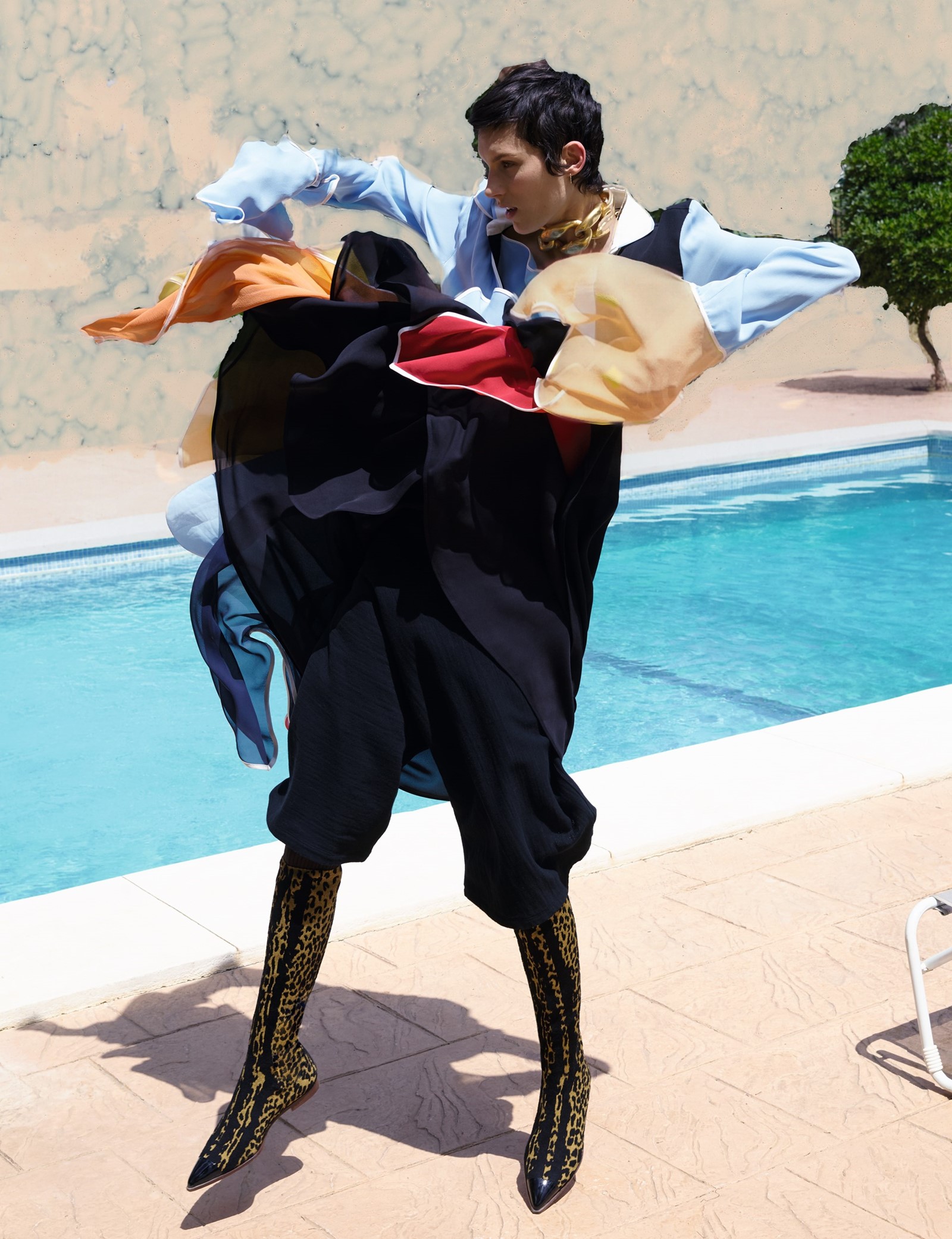
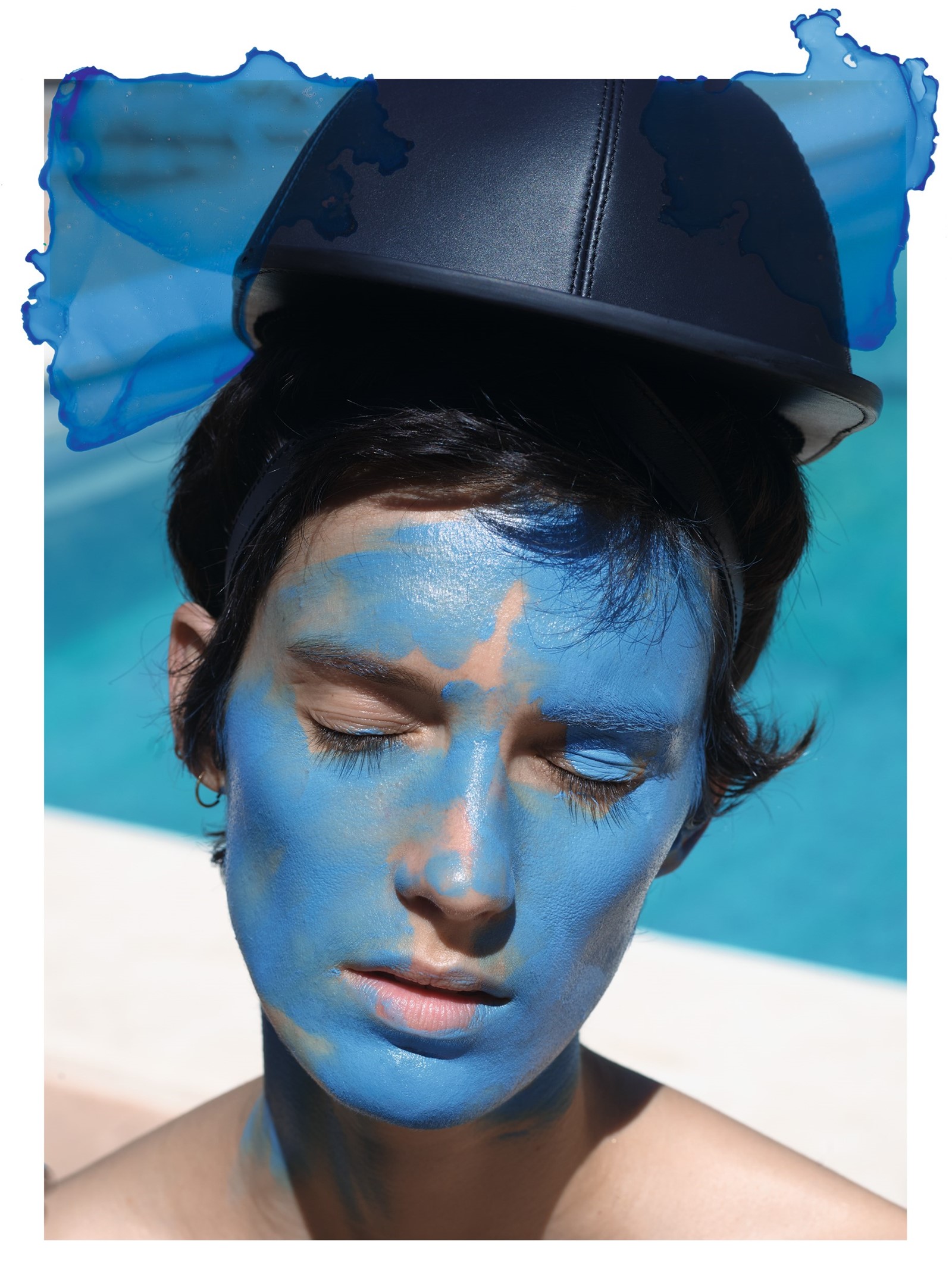
He returned and took a job at Brown Thomas department store in Dublin, selling and displaying menswear and, then, in London and later worldwide, at Prada, as a visual merchandiser under the supervision of the late Manuela Pavesi, Miuccia Prada’s great friend and long-time collaborator. In his spare time, he studied menswear at the London College of Fashion.
The clarity of Pavesi’s eye was more formative than anything he learnt at university, Anderson always says. “We’d put all the stuff together and she would come and check it. I learnt everything working with her. I have never known anyone with such a distinct vision.” His travails as a fashion student were less productive. He scraped through his degree, graduating in 2005. “I ended up submitting window displays and a collection that involved see-through underwear, insects in resin and Aran knits. It was a disgusting mess.”
Unconventionally, Anderson’s first collections were for men and – more familiar territory now – women liked it so much they started buying it, too. He began designing a womenswear collection in 2010, at which point he was awarded British Fashion Council NewGen sponsorship, two years after his label launched.
Search for Jonathan Anderson online and, inevitably, you’ll find references to gender fluidity. He once told the Evening Standard’s ES Magazine that he didn’t care for dresses. “I hate them,” he said. Certainly he thought nothing of putting women in men’s clothing and, perhaps more headline grabbing, men in frilled hot pants and skirts, but that was then. As for the dresses, he is now responsible for many of the finest, for both Loewe and his own label.
“I cannot do two brands without trusting... But in order to let go you have to be surrounded by people who think the way you think or have the same drive.” – Jonathan Anderson
“When you do something and then you suddenly see 25 other people doing it and it becomes a trend, it can be a little embarrassing,” he says now. “So there is a rejection process to it. And there are probably people who would say, ‘You should have stuck to the same track.’ But if it’s the same all the time, yes, we could build a steady business that would grow two million a year, but it would be incredibly boring. When you’ve seen it once, and been excited by it once, there may still be excitement for it in ten years’ time from the outside, but it’s the same silhouette, in a different colour. It’s the same principle, so there is no risk in it. There is no getting out of your comfort zone. if I was still making ruffled shorts and a bustier for a man today, where would I be? I think I would be trapped in the idea that I only represent gender.”
When asked to explain his own perception of the difference between JW Anderson and Loewe, however, the designer still primarily identifies the former as “an agitator”.
“I’ve always thought that JW Anderson is a cultural agitator, whereas Loewe is a cultural landscape,” he says. “One is there to create anarchy and the other is there to distil it. I think the JW Anderson woman is who I would dream of being. I would love to walk down the street with a hat, a cape. I want to have the body, the idea, the conviction to do that. Whereas I feel like Loewe is actually very nearly me as a woman, somehow. It’s more eased. And it’s the same with men’s. So yeah, that’s how I define them both.”
Anderson’s collections and both channels of his creativity appeal to different women. His own label has the dynamic energy of youth, clothes careening between different fabrics, textures and techniques with spontaneity: last season, draped layers and swaying fringe; this one, architectonic shoulders and ribbons of tulle. Loewe, by contrast, is in a constant state of growth and gradual change: evolution versus revolution. The woman is refined, cultured – older. Which is, after all, who the consumer of these uncompromisingly high-end clothes is likely to be, a significant and oft-overlooked fact of fashion today. That highlights another dichotomy in his work: pragmatism versus fantasy. Anderson doesn’t wear much of his own menswear – he lives in jeans and a shirt or sweatshirt.

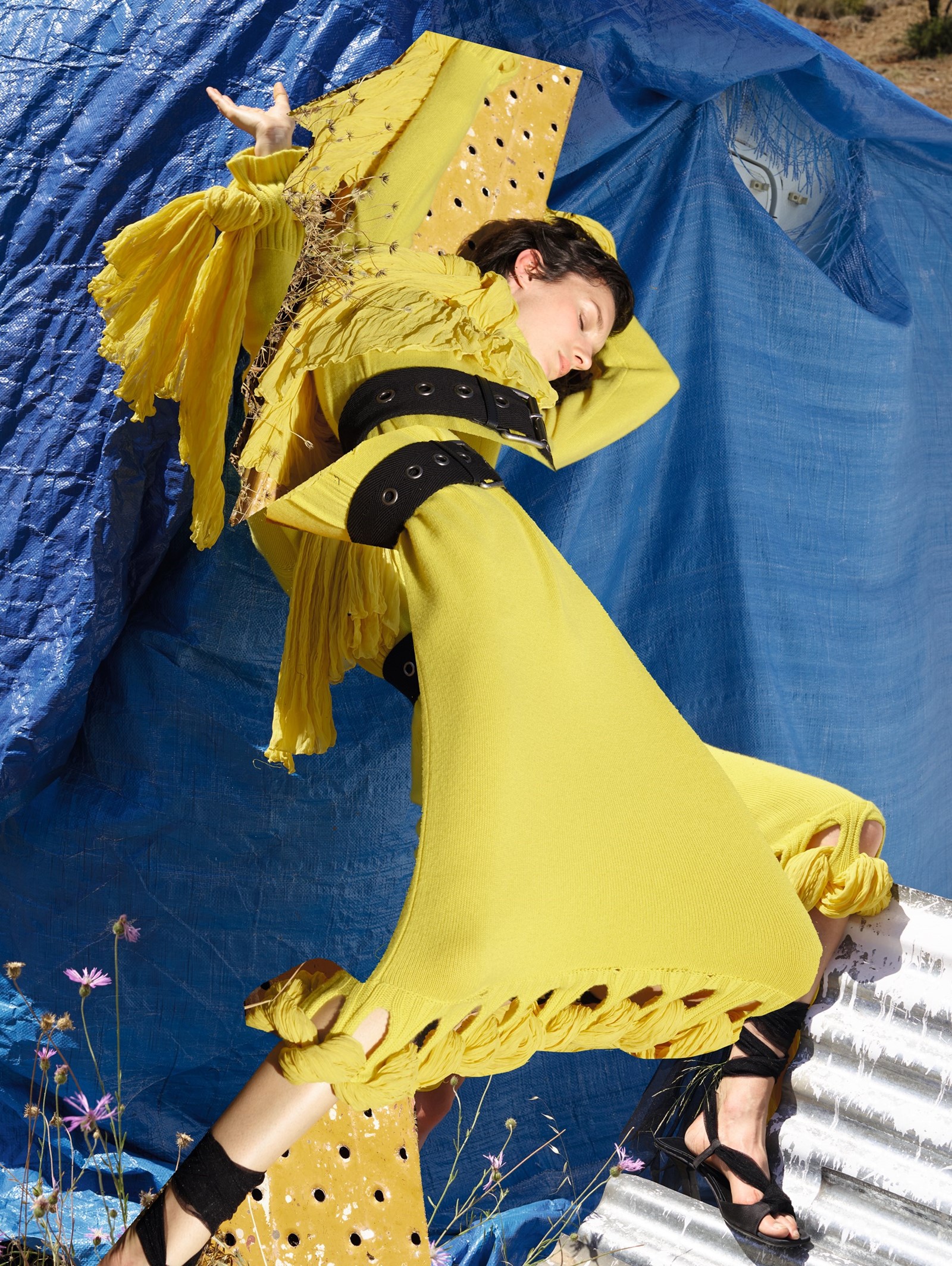
The overt elegance of JW Anderson’s current women’s collection this season was different somehow, a gesture of empowerment and unabashed loveliness widely acknowledged as a step up. “I think it probably works because people didn’t expect that from us,” its designer explains. “There is an irony to it that is quite important because it’s a bit of a surprise.” Does that irony lie in the fact that the woman wearing the clothes is not, in fact, of the conventionally elegant, well-mannered kind? She’s a little, well, a little touched, not to put too fine a point on it.
“Exactly,” says the man behind her creation happily. Whereas Loewe has started to cultivate its look, both brands perform incredibly different functions. I was put into this brand Loewe that no one really knew. As much as people say they did, I don’t think they did. I think it was a brand that was kind of like a photocopier before. I don’t think it had a language, I think it was very industrial as a brand. I feel like there were a lot of houses that started around 1846 making travel bags – it wasn’t a unique thing. The most unique part of it was that it was in Spain. So when I went into it, the child-like, competitive side of me thought, ‘I’m inside this group and it’s a tiny brand, but in my head, I want to be this big.’” He gestures wide. “I need to make this brand big to be able to do what I want.”
Nonetheless, Anderson started small and, again, followed a less-than-usual path, convinced that the convention of mining a brand’s history to propel it into the future was hackneyed. In the first instance, he boldly asked for a year to gather his thoughts. Extraordinarily, the powers that be at Loewe afforded him that, leaving what was left in stores to sell out with no immediate rush to present anything new. “What is interesting was that it was not about being allowed to have the time to do something or not, it was that no one was really looking,” Anderson says now. “No one was looking, so I got away with murder.” When he did start creating product, he wiped out Loewe’s recent past. His pitch for the brand was a book of photographs, among them, famously, one of Kirsten Owen on the beach, shot for Italian Vogue in 1997 by Meisel. Once he was appointed, he made it the lead image for his first print campaign, quite something, given that it was more than 15 years old and the clothes were not Loewe. It did, however, tie in with an almost obsessive nostalgia for the Nineties and moved Loewe away from jolie madame leathers to a more blithe, sunny, oceanic place, even before Anderson had designed a full collection or, really, anything much at all. “It was a fantasy to work with [Meisel],” Anderson says. He still does so, shooting each season’s campaign before the collection is shown, operating outside the system once again. “It was a fantasy to use the archive, it was a fantasy to shoot abstractions and put them into campaigns,” Anderson says.
Meisel – with whom he collaborates only on Loewe – is part of a close-knit team that also includes creative directors M/M (Paris), who work on the conception of sets, ad campaigns and books for the designer’s own label and for Loewe, as well as the stylist Benjamin Bruno and casting director Ashley Brokaw (also for both brands). “I let people do what they want. I trust,” Anderson says. “I cannot do two brands without trusting. You have to learn not to think, ‘If I’m not physically doing it, it’s not mine.’ You have to think, ‘I’m part of this thing.’ But in order to let go you have to be surrounded by people who think the way you think or have the same drive.”
“I like to be surprised by things that I don’t like” – Jonathan Anderson
In that first year at Loewe, Anderson did come up with a bag. “What was interesting was that I didn’t know about leather goods at all,” he explains. “The Puzzle bag happened by accident. It was a bag reminiscent of Seventies pleather, that was kind of crushed. We traced the shapes and it evolved very quickly. I remember seeing the handle, the strap, part of one bag, part of another bag, clipping it all together. I turned round to an assistant and said, ‘This is going to be the bag.’ We launched it and it didn’t work. We were dealing with the success of the Amazona, which everyone had. I was almost competing against that conservative bag. We launched the Puzzle bag, there was no belief behind it, it didn’t work. Then, suddenly, by the end of the year it took off and is still, to this day, the biggest seller.” The Puzzle is reinvented, ceaselessly, in different sizes and seasonal colours and textures. It continues to sell, which is somewhat remarkable. Even more remarkable is the fact that it is one of very few accessories today that references nothing other than itself. In terms of luxury goods, that is the Holy Grail. The more recent Gate bag, with its knotted tab closure, also offered in increasingly varied incarnations, is similarly original. In almost six years, to come up with not one but two such success stories is unprecedented.
Because of the relatively heavy-weight nature of many of his references, it is often assumed that Anderson takes himself rather seriously. He is seriously ambitious, for sure, but there is lightness and wit to both the man and his work. Loewe’s elephant, bunny and cat key rings and bags, pinched and pulled from leather like haute-luxe cuddly toys for customers who truly have everything – including the luxury of not caring – are a studiously mischievous case in point.
“I like to be surprised by things that I don’t like,” Anderson explains. “So, for example, we had Dumbo pyjamas in the menswear collection and that, for me, was all it was going to be. And the bag team were like, ‘We can put it into this and this and this.’ And I was like, ‘This is not me.’ In the end, though, I like the idea that it contradicts what I’m about. It’s funny. And I’m fine to engage with that. Actually, in a weird way, again, it’s about letting go of control.”
Talk moves away from cute Disney elephants and onto Brexit and a soapbox moment. “I just feel like, today, I don’t even know who or what to vote for,” he says. “We live in a day of complete confusion. We have no idea what any of it really means. I understand Brexit from both sides. There’s no accuracy from either. I think it is a shambles of information. Of course there are pros and cons to everything. Europe is not the greatest thing, being outside Europe is not the greatest thing either.”
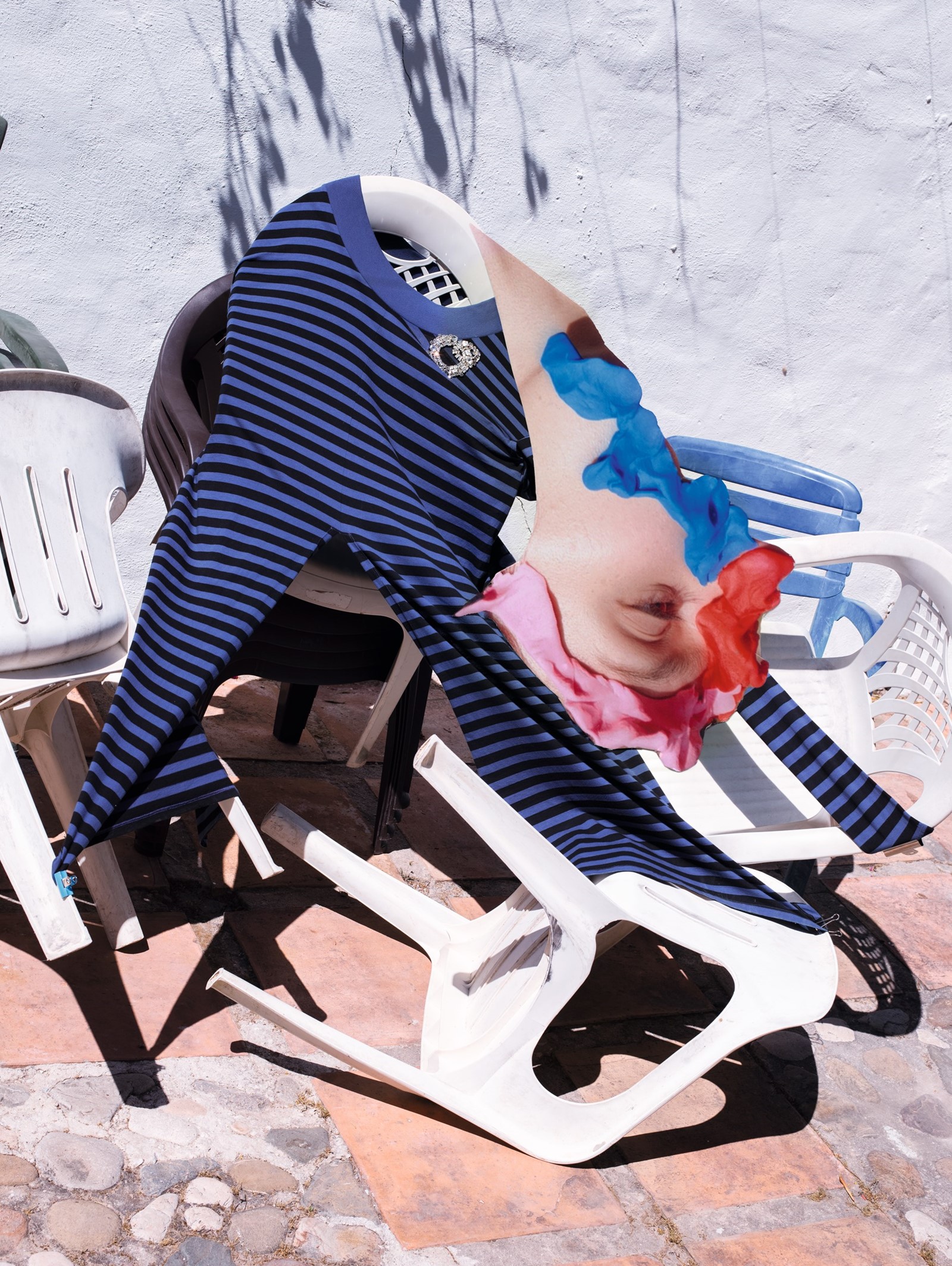
Has he himself ever considered a career in politics? Stranger things have happened, after all.
“Definitely not,” says Anderson. “I like to be a voyeur. I don’t believe that I can use fashion as a weapon for politics either. I feel that sometimes crosses a line. The consumer is from all walks of life. I don’t want to dictate a political message to them. But I can have my own viewpoints and do personally what I feel is right.”
Maybe the most extraordinary thing about Anderson is that he is still only in his thirties – though his experience, knowledge and understanding of the industry he is part of make it easy to forget that. He still has the audacity of youth, for sure.
“There is a part of me that knows there will be a time when I have to walk away, though. It’s important to know when to do that, to know how to get there mentally.”
Relatively speaking however, his career has barely started. “Yes, but to get there mentally might take 20 years,” he continues. “I’m here to sell clothing and do the best job I physically can. That means I need people to do bad shows and I need people to do good shows. There needs to be that competition. That idea that we challenge one another to rethink what this industry is about. That is going to come through progressive change, through resignations, through people stepping down when they’re too old. I have to turn round to myself and say, ‘I have made my contribution, therefore I want someone else to undo that contribution and change things.’”
The overriding impression is that, out of sheer determination, let alone great talent, Jonathan Anderson would succeed whatever he chose to do.
All clothing and accessories from the JW Anderson Autumn/Winter 2019 collection
Hair and make-up: Irena Ruben at House Of Orange using Chanel. Model: Marte Mei Van Haaster at Viva London. Casting: Noah Shelley at Streeters. Photographic assistant: Hanneke Van Leeuwen. Styling assistants: Molly Shillingford, Antoine Caballero and Grace Naef. Production: We Folk. Post-production: Jeroen at Fotolab Amsterdam. Special thanks to Briony Oates at We Folk
This story originally featured in the Autumn/Winter 2019 issue of AnOther Magazine.
